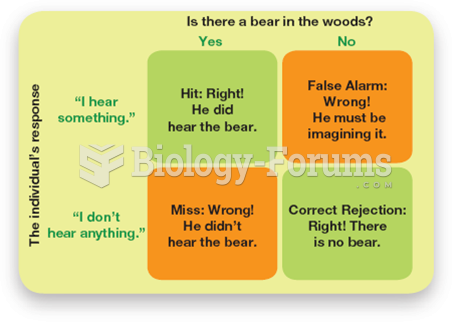|
|
|
Each year in the United States, there are approximately six million pregnancies. This means that at any one time, about 4% of women in the United States are pregnant.
Drugs are in development that may cure asthma and hay fever once and for all. They target leukotrienes, which are known to cause tightening of the air passages in the lungs and increase mucus productions in nasal passages.
Multiple experimental evidences have confirmed that at the molecular level, cancer is caused by lesions in cellular DNA.
After a vasectomy, it takes about 12 ejaculations to clear out sperm that were already beyond the blocked area.
In most climates, 8 to 10 glasses of water per day is recommended for adults. The best indicator for adequate fluid intake is frequent, clear urination.







